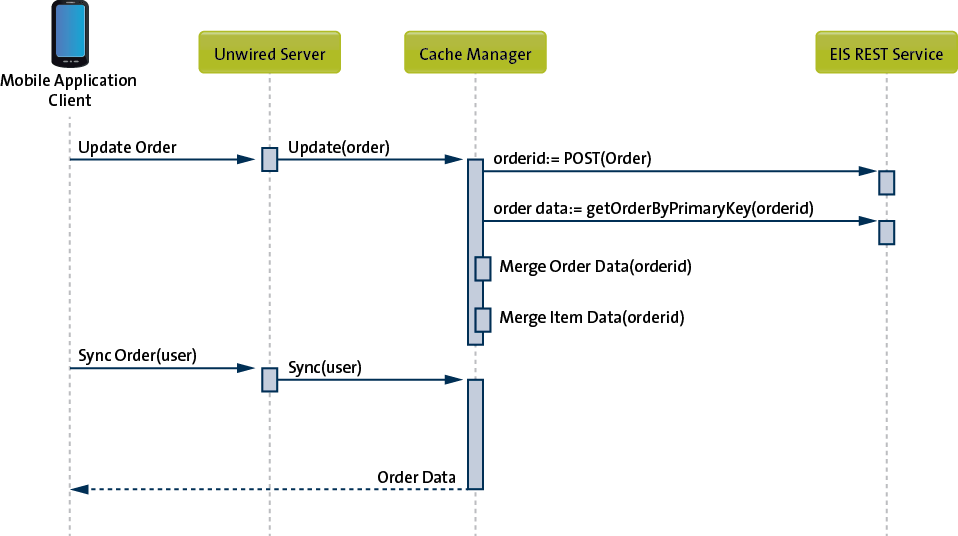The Update and Create operations use the "Apply output of ENTITY READ operation" operation cache policy option with the "Immediately update the cache" cache policy, to immediately apply the results of the Entity Read operation to the Unwired Server cache.
This example:
- Requires the EIS to expose the REST service as a read operation that returns a single instance of the data when given the primary key (Entity Read).
- Reduces the transaction lock scope within the cache when compared with the "Invalidate the cache" option that refreshes a partition, because it remains coupled to the client Update operation and the granularity of the cache refresh is at the primary key/graph ID level rather than the partition ID level.
When executing an operation that is configured for object graph-level immediate
refresh:
- The client executes an operation that is configured for graph-level refresh and synchronizes.
- The operation is replicated to Unwired Server during synchronization.
- Internally, Unwired Server:
- begins a new transaction and reads the replay operation from the operation replay queue.
- Invokes the corresponding data services operation, passing in surrogate key and other client attributes specified by the client application.
- Obtains a graph lock to prevent concurrent modification of the graph by other refresh activities such as On-demand refresh, Scheduled refresh, or DCN.
- Invokes the EIS operation within the context of the operation replay transaction.
- Combines the EIS operation results with the client attributes to determine the business primary key of the affected graph.
- Invokes an Entity Read operation on the EIS to read the entire graph.
- Merges the results of the Entity Read operation with the contents of the graph currently held in the cache bringing the cached graph up to date.
- Commits the operation replay transaction.
